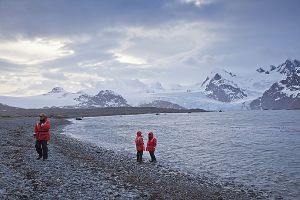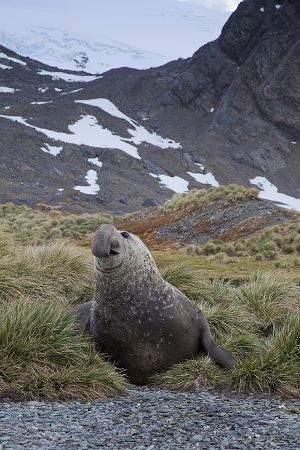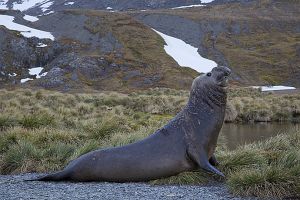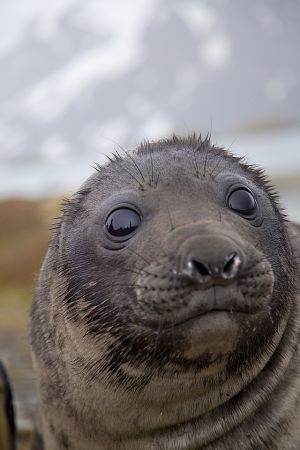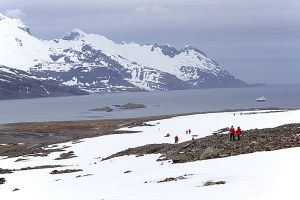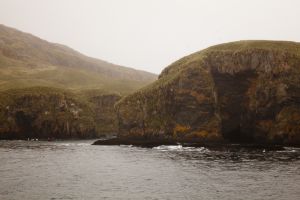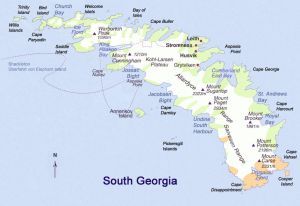Early this morning, we reach the remote north-western coast of South Georgia Island on the National Geographic Explorer, with the intention of spending the next six days circumnavigating the island. Our first landing site is targeted as being King Haakon Bay, on the north-west coast of the island. This side of the island is rarely visited due to the prevailing westerly winds. Whilst grey, overcast and with a wind chill taking the temperature to -2 degrees Celsius, the weather appearing holding up well enough to make this plan feasible. The plan is to go for a long hike (approximately 6km) along a section of the head of the Bay known as Peggotty Bluff.
Peggotty Bluff is an historic location that features in the saga of Shackleton’s Imperial Trans-Antarctic expedition of 1914-16, commonly known as the Endurance expedition after the ship of the same name. Shackleton, Frank Worsley, Tom Crean and Jim McNeish arrived at Peggotty Camp on May 10, 1916, in a desperate attempt to find help to rescue the men they had left behind on Elephant Island, after the Endurance had eventually sunk off the Antarctic Peninsula. It was from Peggotty Camp that Shackleton, Worsley and Crean set off with 3 days worth of provisions, across the uncharted interior of South Georgia Island, up and over the Purvis Glacier, in order to reach a manned whaling station on the eastern side of the island.
This morning we retraced the initial part of their path up the glacier by hiking up the glacial moraine. Wildlife is relatively sparse on this side of the island, however there are several breeding territories of elephant seals on the beach, and nesting Antarctic terns. Some early arriving Antarctic fur seals are also present.
This afternoon, we sailed back towards the mouth of King Haakon Bay, to Cape Rosa and Cave Cove. Cave Cove was the initial landing site for Shackleton and his men on the James Caird (a wooden lifeboat from the Endurance), who sheltered in what they called a cave, but which is little more than a rocky hollow on a narrow stony landing. We landed zodiacs on this narrow little beach, and visited the tiny cave that had to shelter the four men whilst they repaired the James Caird.
This evening’s highlight is seeing the remote Annenkov Island, a protected island with a significant sea bird population. Landings are not allowed, and it is the first sight of the island for all of the naturalists on board who have traveled to South Georgia many times.

